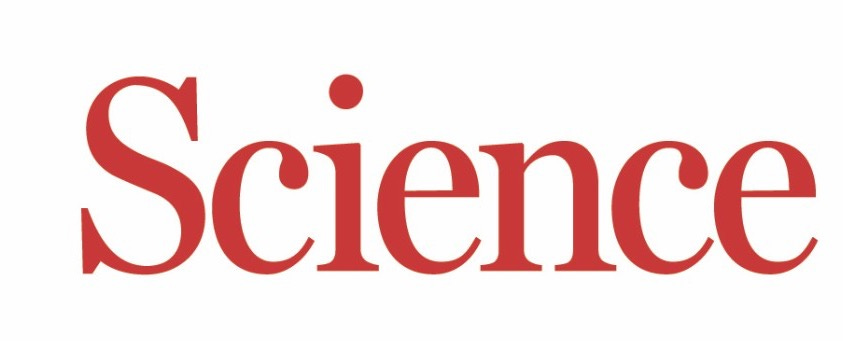The last step in a long process on arsenic life
A note from me and Executive Editor Valda Vinson about the retraction of the "arsenic life" paper
This ran over on my blog at science.org.
On 2 December 2010, Science published online the Report “A bacterium that can grow by using arsenic Instead of phosphorus” by F. Wolfe-Simon et al., which caused a media sensation and firestorm in the scientific community that has continued for years. Today, Science is retracting the paper.
The Wolfe-Simon et al. report described a bacterium, GFAJ-1, that purportedly not only grew in the presence of arsenate, which is normally highly toxic, but grew “by using” the arsenic atoms and incorporating them into nucleic acids. The US National Aeronautic and Space Administration (NASA), which contributed authors to the paper and provided funding, held a press conference announcing the findings as proof of “arsenic life,” a breakthrough in astrobiology. The scientific community immediately expressed skepticism, raising serious questions about both the plausibility of arsenic-containing nucleic acids and the way the experiments were conducted.
Science was flooded with commentary on the problems with the paper and held off publishing it in print. Eventually, the paper was published in the 3 June 2011 issue, along with eight Technical Comments, a Technical Response from the authors, and a note from Editor-in-Chief Bruce Alberts explaining the decision and timing. The authors agreed to make the bacterium available, and in July 2012, Science published two papers showing that the bacterium was resistant to arsenate but did not incorporate it into biomolecules. One of the Technical Comments had pointed out that the nucleic acids that were analyzed were not sufficiently purified before the acquisition of spectra that suggested the presence of arsenic. Given the evidence that the results were based on contamination, Science believes that the that the key conclusion of the paper is based on flawed data.
At no point has there been any discussion or suggestion at Science of research misconduct or fraud by any of the authors. Nonetheless, the response of many in the scientific community, especially on social media, went beyond technical criticism and instead verbally abused the authors, especially the first author. Science emphatically rejects and condemns all ad hominin attacks that have been directed toward the authors.
In his 2011 Editor’s Note, Alberts explained that the publication of the Technical Comments was “only a step in a much longer process.” We are ending that process today by retracting the paper. We have made this decision after an extensive set of deliberations and discussions among the editors. We have consulted with the Committee on Publication Ethics (COPE) and are confident that our decision aligns with their guidelines for research integrity.
Over the years since the paper was published, and especially in the past 5 years, as research integrity has become an even more important topic, Science has moved to retract papers more frequently for reasons other than for fraud and misconduct. In this case, a number of factors led to the publication of a paper with seriously flawed content, including the peer review process and editorial decisions that we made. With this retraction—and with all retractions and corrections—we acknowledge and take responsibility for the role that we played in the paper’s publication.
The authors of the paper all disagree with our decision, as noted in the Retraction. All but one of the authors have signed an eLetter explaining their disagreement. In their eLetter, the authors state that Science “went beyond COPE” in our decision. We disagree. COPE guidelines have for some time allowed for editorial retraction due to honest error or naïve mistakes.
Despite our disagreement with the authors, we hope this brings this story to a close. We also hope that the scientific community will engage graciously and with professionalism in this resolution.
Added beyond what is on Science blog:
As this has rolled out, several questions have come up that we have answered. Here are the answers:
How many retractions has Science done for honest error? It is not the case that we have suddenly started doing editorial retractions that do not involve clear misconduct. It’s always hard to know for sure what is honest error or somewhat willful negligence, but our reading of the 20 retractions done since 2019 is that 11 were for honest error and 2 of those were retracted against the wishes of at least some of the authors.
Will Science be going back to look at other problematic papers? Our process hasn’t changed. For us to do an editorial retraction, we need two things. The first is a concerns raised that are sufficiently specific that we can investigate them (if you have any, feel free to send to science_data@aaas.org). The second is access to enough information to make a judgment on our own without involving the institution or authors. This is generally limited to bad images that we can analyze or information that we receive from others who have tried to repeat the experiments. Both of these conditions hold in the case of Wolfe-Simon et al.
Here’s the barrage of stories on this: NYTimes, Science, Nature, Retraction Watch, and Scientific American. All fair and fine - we weren’t expecting universal agreement on this.



Thanks to EIC Thorp for taking this action, which I have been urging him to take for years. https://retractionwatch.com/2025/07/24/science-retraction-arsenic-life-nasa-astrobiology/
Bravo to Science for owing up and clearing the page on this long lingering controversy. Lets all hope that this sort of non-defensive explanation by this prestigious journal sets a new standard in publishing research. No journal looks more credible right now than AAAS's Science.